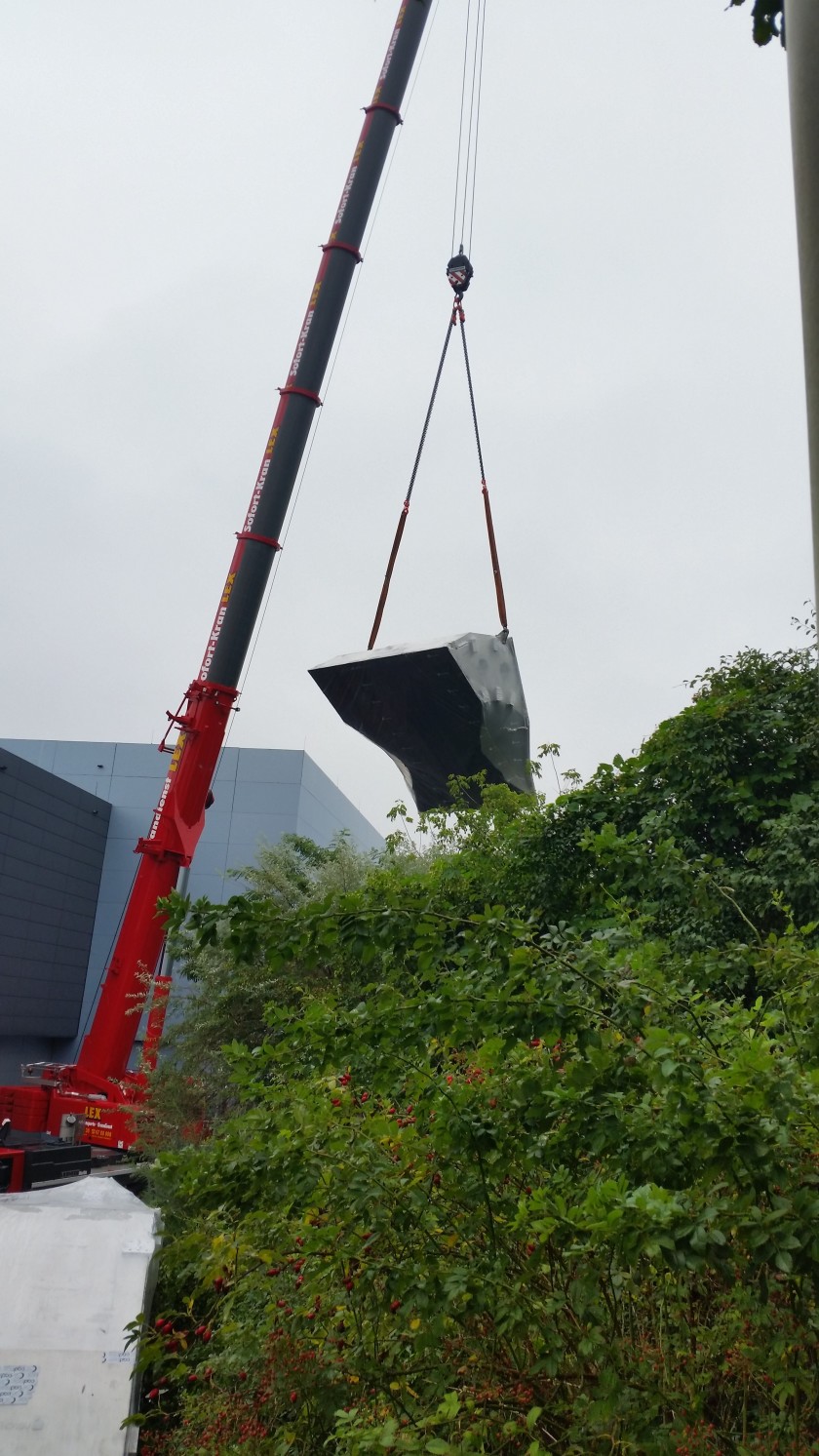NEAT: The chamber from Spain - HZB future log's latest addition

At first, the various parts are carefully unloaded so that they can be lifted quickly into the building through the roof of the NEAT building's newest addition.
© Stefanie Kodalle
Since the HZB future log (#HZBzlog) went live in March of this year, there have been a total of 15 episodes on building and developing our future projects. The focus has been on three projects in particular: high field magnet (for a total of seven episodes), EMIL (five episodes), and BESSY-VSR (three episodes). Next, the NEAT project team is taking the #HZBzlog stage.
The first episode entitled "The chamber from Spain" lets those watching and reading trace the detector chamber's course. Constructed in Spain, the chamber is slated to arrive at the HZB within the next couple of days. Witnessing the chamber's spectacular lift into the neutron conductor hall through the building's ceiling will be one of the episode's highlights.
The first NEAT episode will pick up where the current high field magnet (HFM) episode "Stairway to Heaven" left off. The episode's title, which is loosely based on the Led Zeppelin rock ballad of the same name, is no accident. Because if the electricity tests turn out successful, the HFM team will indeed feel fairly heavenly, meaning not much will stand in the way of successfully starting operation of the magnet.
As always, we will also be letting you know about stuff to know about current topics that are part of the team's research activities. In the case of "Stairway to Heaven," it might look something like this: Hartmut Ehmler talks about how the team gradually increases the electric current's strength that is being sent through the magnet. He tells of unexpected rises in temperature and of the team's response to them. Right after, Jonas Böhm explains facts to know about helium, the coolant of extremes. And Antonia Rötger will be speaking on the topic of quenching.
The NEAT episode will also provide interesting tidbits and special features on the topic of the construction work including a piece on the "travel window." Not sure what we're talking about? Just drop by and stay tuned to #hzbzlog (www.hzbzlog.com). You're of course invited to comment or ask questions. For HZB staff, that bit will be a piece of cake. All they have to do is click the "comment" button and register using their HZB email address.
IH
https://www.helmholtz-berlin.de/pubbin/news_seite?nid=14055;sprache=en
- Copy link
-
Peat as a sustainable precursor for fuel cell catalyst materials
Iron-nitrogen-carbon catalysts have the potential to replace the more expensive platinum catalysts currently used in fuel cells. This is shown by a study conducted by researchers from the Helmholtz-Zentrum Berlin (HZB), Physikalisch-Technische Bundesanstalt (PTB) and universities in Tartu and Tallinn, Estonia. At BESSY II, the team observed the formation of complex microstructures within various samples. They then analysed which structural parameters were particularly important for fostering the preferred electrochemical reactions. The raw material for such catalysts is well decomposed peat.
-
The future of corals – what X-rays can tell us
This summer, it was all over the media. Driven by the climate crisis, the oceans have now also passed a critical point, the absorption of CO
2 is making the oceans increasingly acidic. The shells of certain sea snails are already showing the first signs of damage. But also the skeleton structures of coral reefs are deteriorating in more acidic conditions. This is especially concerning given that corals are already suffering from marine heatwaves and pollution, which are leading to bleaching and finally to the death of entire reefs worldwide. But how exactly does ocean acidification affect reef structures?
Prof. Dr. Tali Mass, a marine biologist from the University of Haifa, Israel, is an expert on stony corals. Together with Prof. Dr. Paul Zaslansky, X-ray imaging expert from Charité Berlin, she investigated at BESSY II the skeleton formation in baby corals, raised under different pH conditions. Antonia Rötger spoke online with the two experts about the results of their recent study and the future of coral reefs.
-
Energy of charge carrier pairs in cuprate compounds
High-temperature superconductivity is still not fully understood. Now, an international research team at BESSY II has measured the energy of charge carrier pairs in undoped La₂CuO₄. Their findings revealed that the interaction energies within the potentially superconducting copper oxide layers are significantly lower than those in the insulating lanthanum oxide layers. These results contribute to a better understanding of high-temperature superconductivity and could also be relevant for research into other functional materials.
